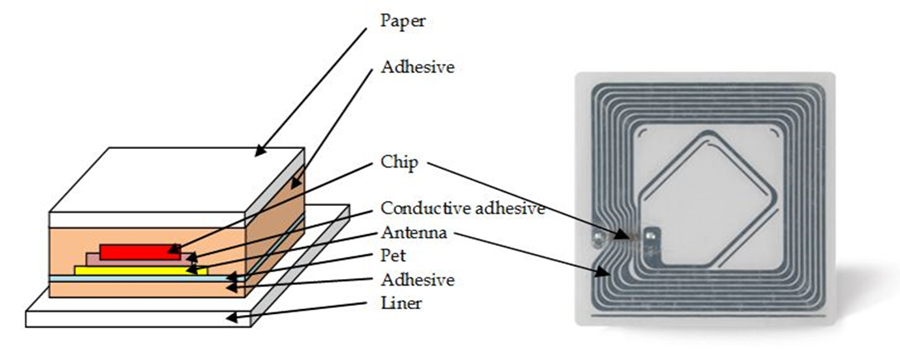RFID tag is an ID system that uses small radio frequency identification devices for identification and tracking purposes. An RFID tag system includes the tag itself, a read/write device, and a host system application for data collection, processing, and transmission. An RFID tag (sometimes called an RFID transponder ) consists of a chip , some memory and an antenna .
- Passive RFID tags: Passive tags only back scatter magnetic or electromagnetic waves coming from the interrogator. That is the only way they can communicate with the interrogator. In other words, they do not have any RF emitters on board so they cannot create their own RF signals. Batteryless passive tags use the incoming signal from the interrogator to supply the embedded chip. But batteryless and passive are two different characteristics of the tag and are unfortunately often confused.
- Semi RFID tags: Battery assisted passive (BAP) tags have an embedded battery (rechargeable or not) to supply internal circuitry or connected sensors or actuators. This power source is not used the create any RF signal as the tag is always passive (back scatter only incoming RF signal from interrogator).
- Active tags: active tags have their own RF emitter on board. They can either send RF signals to the interrogator as they receive a comprehensive command or function without any external command (they act as a RF beacon). As creating an RF signal requires a lot of energy, CXJ active tags quite often have an internal (embedded) power supply. This means they are often confused with battery assisted tags.







